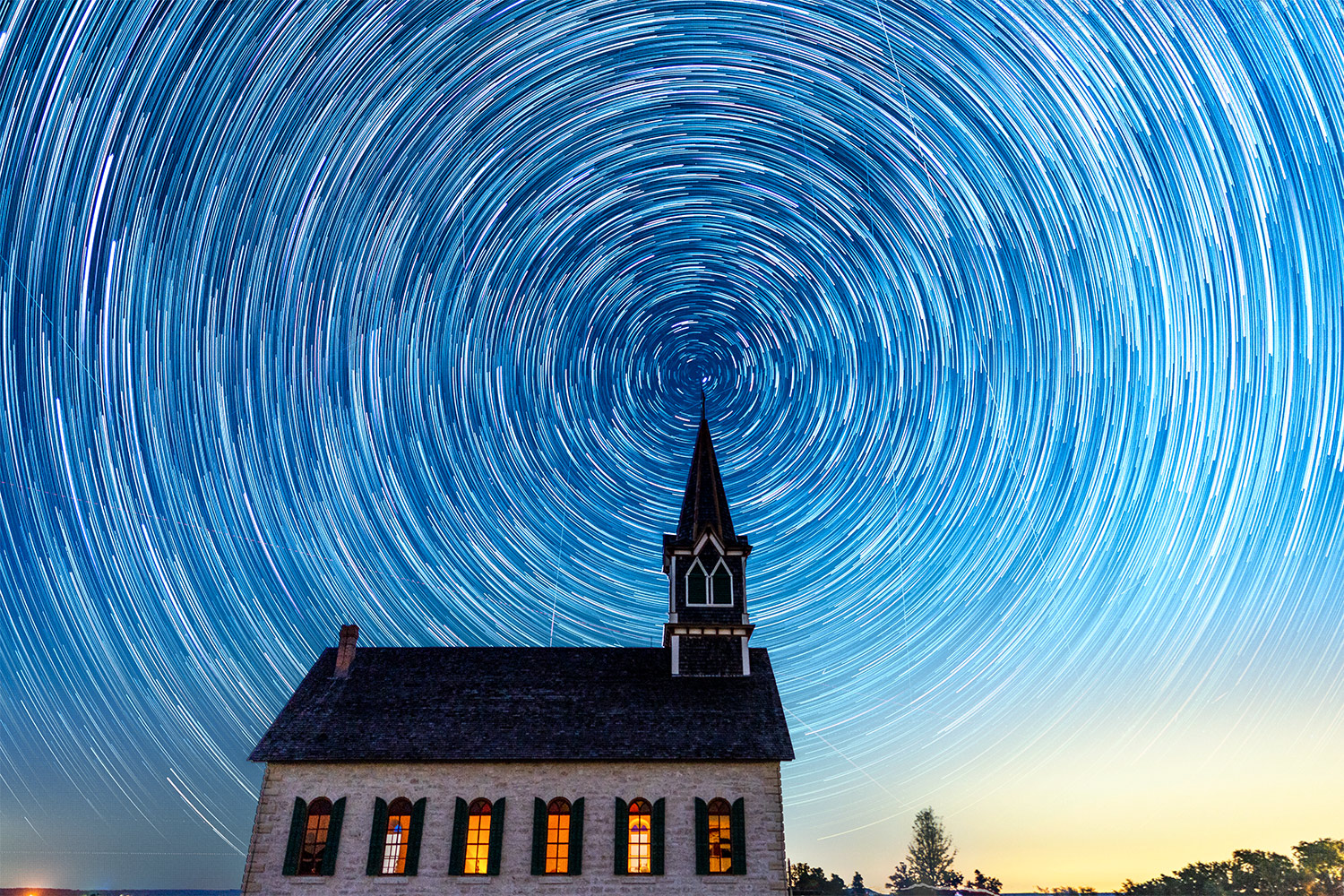Settlers from Norway settled in central Texas starting in the mid-1850s. They lived simple lives trying to make ends meet in their new land which was very different (read: hotter) than their homeland. In 1886, roughly between what today are the two villages of Clifton and Cranfills Gap, the settlers built St. Olaf’s Kirke (St. Olaf’s Church). The building still stands today, a relic of an important history for the area. Even today the church has no running water nor electricity to honor the origins of the building (although it has been restored a few times). It’s a beautiful monument to the religious spirit of the Scandinavian immigrants who settled this part of Texas.
Cranfills Gap is about 100 miles southwest of Dallas. It’s relatively far away from big cities, so light pollution is relatively low (although it’s not technically a Dark Sky site), making the Rock Church one of the most sought-after foregrounds for astrophotography. I had never been out there and decided to venture out last week with my buddy Teja from Grabamile. We called the lady on the website for the church to get her permission, made a donation to the donation box inside the church, and set up our cameras as the night began to fall around us.
We each had a few cameras with us, hoping for different compositions. The Milky Way, on schedule, started showing its core to us and moving gradually west until it was right over the steeple, making for a really cool single exposure!
The entire time we were waiting on the Milky Way to move into place, I had another camera working. My Sony a7rIV and the epic 24mm G Master lens were cooking up a great photo for me facing north. There’s a photo technique called Star Trails where the photographer opens the shutter for a long period of time to capture stars moving across the sky. My concept for this shot was to center the star Polaris (the North Star) on the tip of the church steeple. Polaris is very close to the celestial pole, meaning it will stay put in the night sky while all the other stars seemingly rotate around it.
The a7rIV was set to Interval Shooting mode and it popped off 500 10-second shots over 83 minutes. When I got the images back into my computer, the dang thing nearly exploded trying to process everything! Eventually I had to reduce the scale of the image and only use 400 of the shots and my computer was still struggling to keep up. The result, though, was worth every single second it took. May I present to you what will probably be my favorite image of the year: Central Texas Star Trails.




Great shot Andy. Star Trails are one of my favorites. In m opinion, you could take fewer 30 second exposures to achieve it. No reason to only go 10 seconds with star trail shots since you are looking for motion. Unless I missed something. I usually do 100 to 150 x 30 secs.